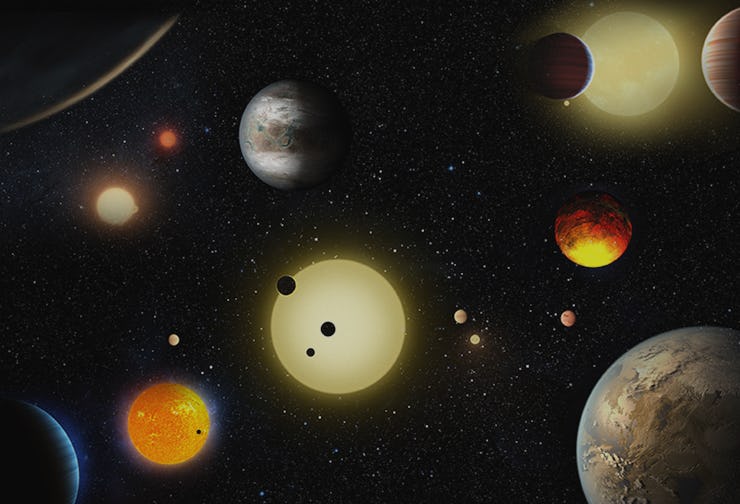A.I. Can Help Scientists Hunt For Alien Life on Exoplanets
Computers are the future of space exploration.

Artificial intelligence has completely revolutionized practically every industry. From translation to designing CGI creatures for the big screen, A.I. is well on its way to being incorporated into almost everything humans do, that also includes the search for extraterrestrial life.
A team of researchers at Plymouth University have developed A.I. that is able to estimate the likelihood of life on exoplanets. With this intelligent tool in scientists’ arsenal, they can quickly identify which exoplanet is worth exploring as opposed to trying to study every single one discovered. The work has seen great progress since its inception and will be presented at the European Week of Astronomy and Space Science (EWASS) in Liverpool on April 4.
Join our private Dope Space Pics group on Facebook for more strange wonder.
“Given the results so far, this method may prove to be extremely useful for categorizing different types of exoplanets using results from ground-based and near-Earth observatories,” Dr. Angelo Cangelosi, the supervisor of the project, says in a statement.
Composite image showing an infrared view of Saturn's moon Titan, taken from NASA's Cassini spacecraft. Some measures suggest that Titan has the highest habitability rating of any world other than Earth, based on factors such as availability of energy, and various surface and atmosphere characteristics.
This system makes use of neural networks — or artificial replicas of the human brain — that are incredibly good at identifying patterns in huge sets of data. Piling through information taken from hundreds of exoplanets could take humans years, but neural nets are able to crunch these numbers in minutes.
The A.I. classifies planets into five different categories based on how similar they are to present-day Earth, early Earth, Mars, Venus, or Saturn’s moon Titan. These celestial objects are the most potentially habitable worlds in our Solar system because of their rocky composition and atmospheres.
The team behind this alien-hunting computer trained it on over a hundred different atmospheric observations from various planets, each with several hundred parameters that contribute to habitability.
Schematic diagram of a neural network. The inputs represent values from a spectrum of a test planet’s atmosphere. The output layer contains a ‘probability of life’, which is based on a measurement of the input’s similarity to the five Solar System targets.
This A.I. development comes a few weeks before NASA’s exoplanet-finding TESS spacecraft is scheduled to launch. If the mission goes according to plan, this neural net could potentially analyze the vast amount of data that TESS will be sending back to Earth during its journey.
With data, A.I., and a little luck, astronomers might be able to pinpoint an exoplanet or two with a high chance of fostering microbial life. If this proves to be true, A.I. will be as much of a part of future space exploration as human ingenuity.